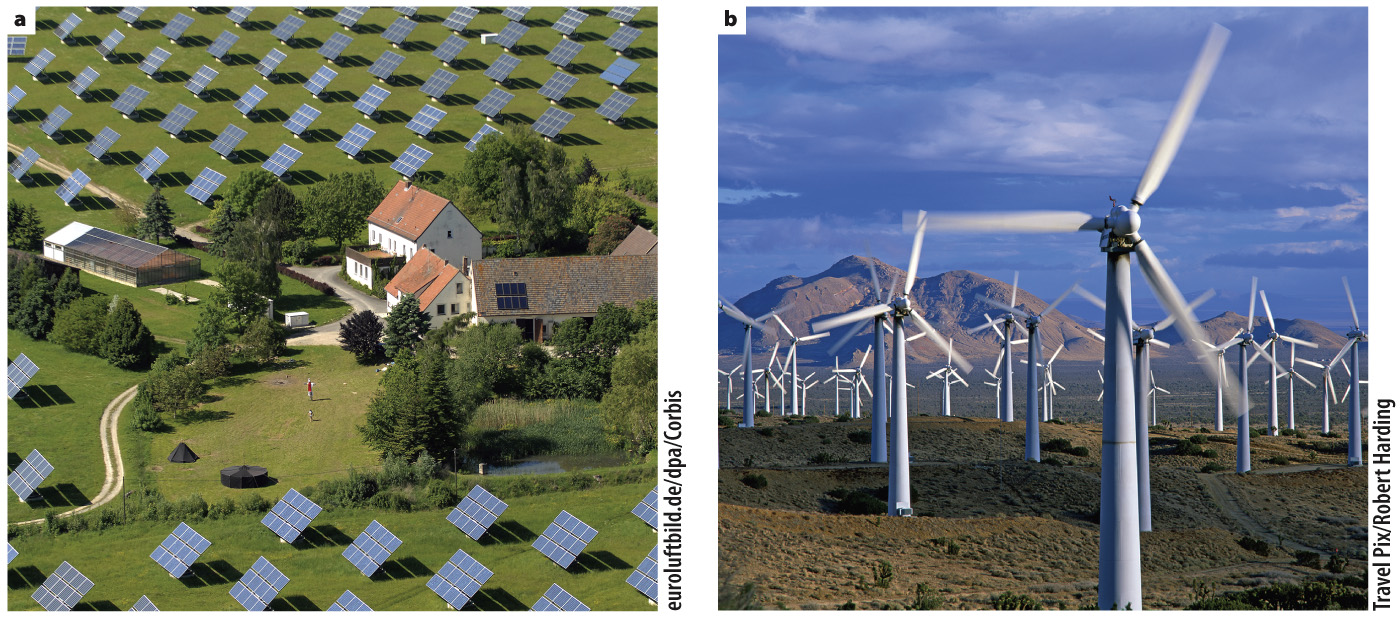What can be done?
From the preceding discussion, it is clear that rising CO2 has both direct effects on the physiology of land and sea organisms and indirect effects related to climate change and ocean chemistry. In order to ensure our environmental future, scientists must understand the climate system and biological responses to global change much better than they do now. Because the principal source of rising CO2 is the burning of fossil fuels, the solutions we develop as citizens will clearly focus on energy—
Half a century ago, geologist M. King Hubbard predicted from patterns of oil use and the rate at which new oil fields are discovered that petroleum production in the United States would peak in the 1970s and decline thereafter. Global production, he suggested, would peak later, in the early decades of the 21st century. As King predicted, conventional petroleum production in the United States peaked in 1972 and has fallen since then to about half its peak rate of production. On the other hand, unconventional petroleum resources, made available in no small part by hydraulic fracturing, or fracking, is expected to restore total petroleum production in the USA to near-
In particular, natural gas (methane, CH4) looms large in estimates of 21st century energy generation. Fracking has revolutionized natural gas extraction; in the United States alone, shale gas production has increased by 700% since 2007. Of all fossil fuels, natural gas generates the most energy for each mole of CO2 produced by combusting it; thus, generating electricity by natural gas has advantages over burning coal. CO2 emissions do continue, however, and gas leaks from expanding wells and pipelines add more methane, a strong greenhouse gas, to the atmosphere. Scientists and citizens debate whether the toxic fluids used in fracking will contaminate ground water in regions where shale gas is produced.
Like fossil fuels, alternative energy sources—

Wise choices by citizens and consumers can slow the growth of atmospheric CO2, but the CO2 already in the atmosphere isn’t going to go away quickly. As noted earlier, we have dramatically increased the rate at which CO2 is added to the atmosphere, but we have not changed the rate at which it is removed. The geologic processes that control atmospheric CO2 work on longer timescales. Therefore, even if we could cut CO2 emissions by 90% tomorrow, CO2 would not return to nineteenth-
Another possibility is to actively remove CO2 from the air. Reforestation of previously cleared landscapes removes carbon from the atmosphere because plants build biomass from CO2 during photosynthesis (Chapter 8). It is also possible to capture CO2 as it rises upward through smokestacks, although it is currently expensive to do so. We do not yet know how to scrub CO2 directly from the atmosphere, but if we could do so at reasonable cost, it would apply a significant brake to climate change.
Clearly, forestry and 21st-